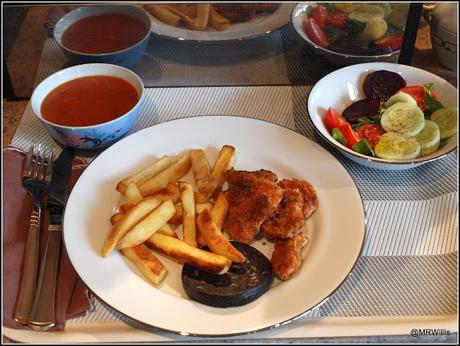Unlike many nondescript fungi, COTW is one that you will recognize very easily once you know what you're looking for. Whilst its shape is infinitely variable, its yellow-to-orange colour is its most striking feature - not for nothing is it sometimes called the "Sulphur Polypore"!
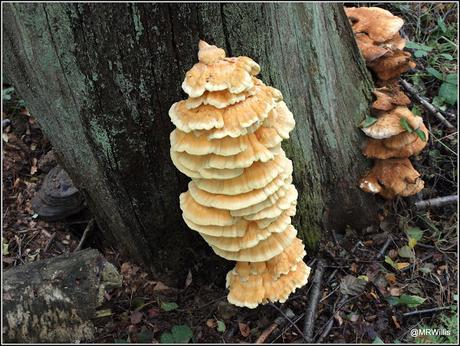
COTW is a saprobic fungus, which means it feeds on dead wood. It favours deciduous trees like Oak, Beech and Chestnut. It seems to like the presence of water and is reportedly quite common on the big trees you often find alongside riverside walks - even in cities. Very rarely does it appear on conifers, and when it does, it is normally the Yew which hosts it. Be careful if you harvest COTW from a Yew tree because it is believed that the fungus can absorb the toxins from the highly-poisonous Yew tree.
The COTW is highly prized in the fungi-foraging community not only because it is spectacular to look at and easy to identify, but also because it is delicious to eat. Many people think that it closely resembles real chicken, in terms of taste and texture when cooked. It is also one of the few fungi said to freeze well in its raw state, so easy to preserve.
I have been actively interested in fungi-hunting for the best part of 3 years now, and until this week I have never found a COTW in good condition. I had only seen one or two very old and ragged specimens. However, Hampshire (where I live) is supposedly a good area in which to find it, so I have dutifully scoured most of the woodland within easy reach of our home. Walking in the woods last week I spotted something long and pale on a very old dead Oak tree, in an area that would normally be virtually inaccessible due to it being very boggy. With the recent prolonged period of drought the ground had dried up, so I went in for a closer look. It looked almost like that foam filler you use for filling gaps in walls when you are doing some DIY! Based on research I have done, I was fairly sure this was immature COTW.
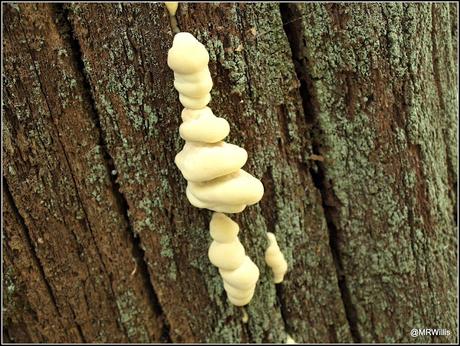
As I was photographing it, I became aware of something even more interesting on the other side of the tree...
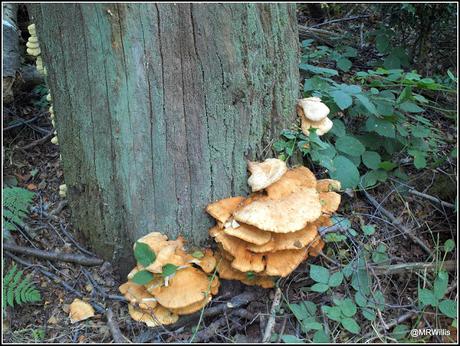
Notice the vertical line of very immature fungus on the left side of the tree.
It was a huge patch of COTW. Very spectacular, but unfortunately far too old to be edible. Humph, on the one side of the tree, COTW that was too old, and on the other side COTW that was too young. How frustrating!
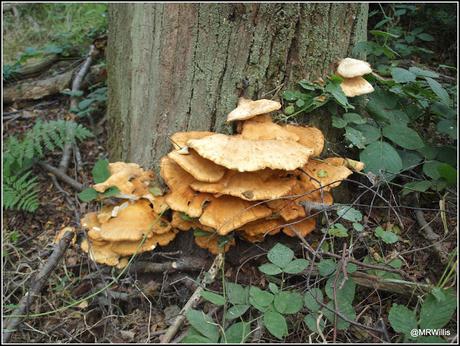
So, apart from some photos on my camera, I went home empty-handed. Since this was the best result for this particular fungus that I had had to-date, I resolved to go back another time and try for some of the "too-young" stuff, once it had matured. I asked around in the fungi-spotting community and established that the young COTW was likely to reach a decent size in another 4 or 5 days.
I should say that my first visit was on a Wednesday afternoon, and the weekend that followed saw us getting two days of more or less solid rain (which is good for making fungi grow). On Monday morning the rain had stopped so I went again to the same place - earnestly hoping that no-one else had got there before me! I was amazed by what I saw. The young fungus had "blossomed" and grown enormously:
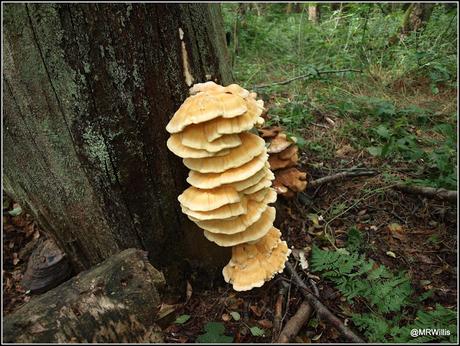
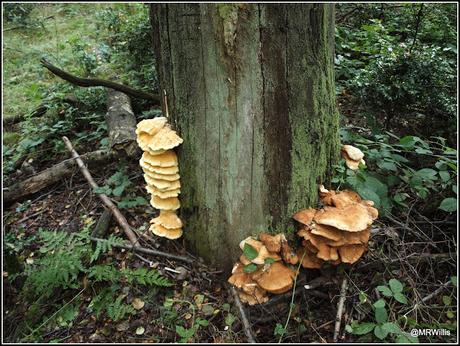
Now, I don't claim to be an expert on this, but I reckon this COTW was well-nigh perfect. Big enough to provide a very substantial harvest, but not too big and leathery.
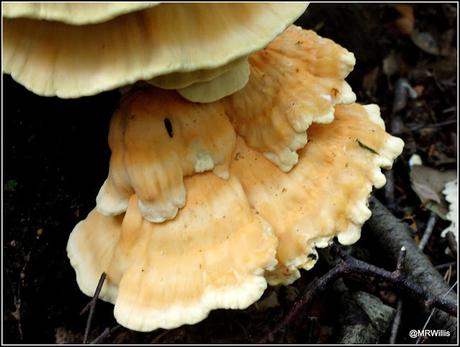
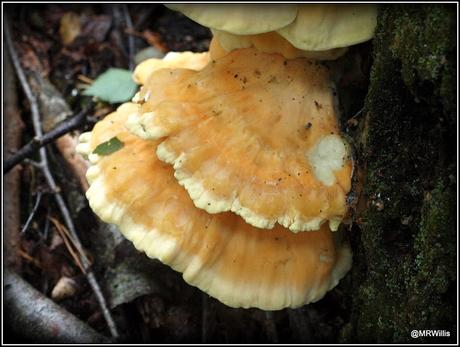
I cut a small portion - about two "leaves", from the top part of the fungus.
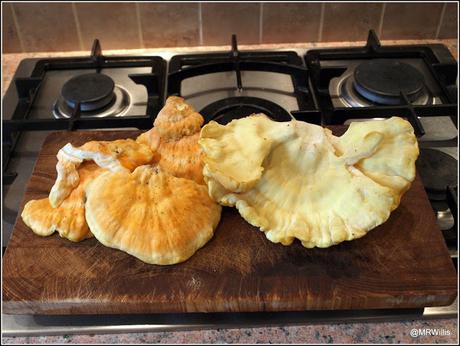
Since we have not eaten this type of mushroom before, it makes sense to be careful and try just a little portion to begin with. As with many fungi, some people experience an adverse reaction to this one. Those people with whom the fungus disagrees report symptoms similar to food-poisoning, like you might get if you had eaten bad seafood.
The best part of the mushroom to eat is the youngest part, which should still be moist and pliable, not stiff and dry. This bit looks good to me...
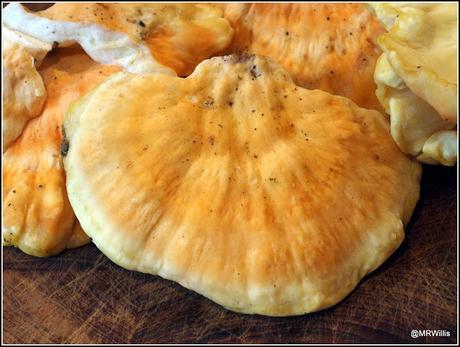
When I showed the mushroom to Jane she sniffed it and said it smelt like the best Chanterelles, with a scent almost like ripe apricots.
Playing really safe this first time, I boiled the mushroom in water for 15 minutes, drained it and then fried it in butter for a further 15 minutes.

Despite all that cooking, the mushroom retained a good colour, texture and flavor. Jane and I both liked it a lot, agreeing that it was probably the best wild mushroom either of us had eaten - except perhaps the Cep. I don't think I would mistake it for chicken, but I do agree that it would make a good substitute for it.
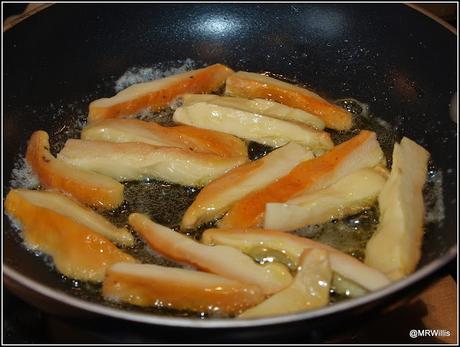
I'm pleased to report that neither of us has experienced any adverse effects from eating this mushroom, so we will definitely be eating it again.
P.S. Following our successful first taste of COTW, I cooked some COTW Goujons:
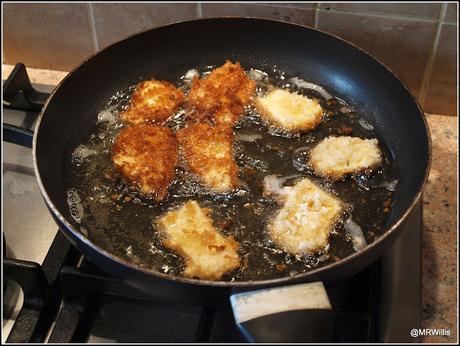
Boiled in water for 15mins as before, then floured, egged and breadcrumbed and fried in sunflower oil. Served with homegrown salad, homegrown tomato dipping sauce, chips and a slice of Black Pudding. Delicious!
